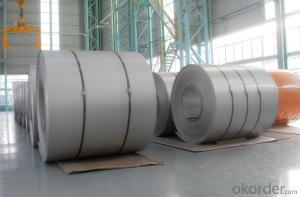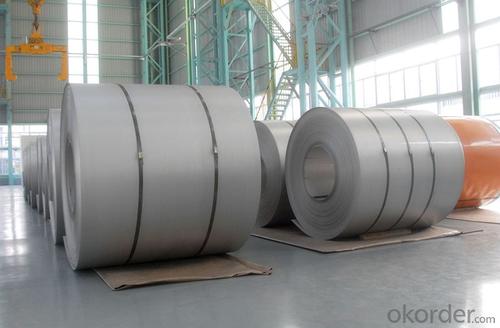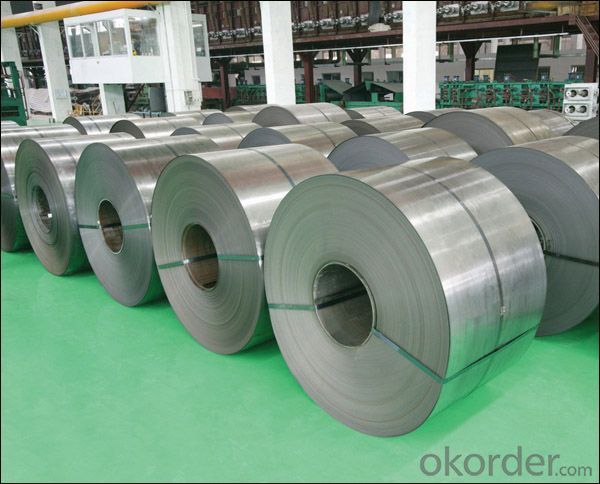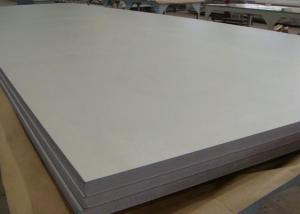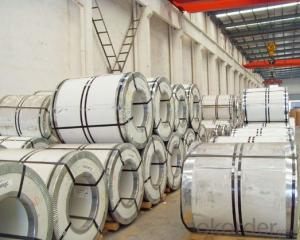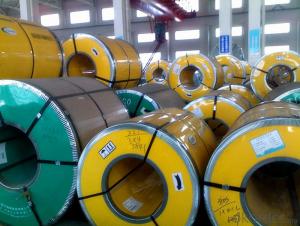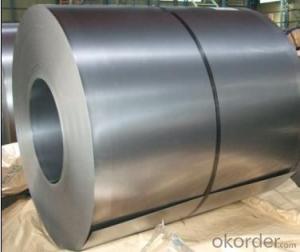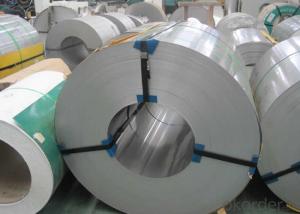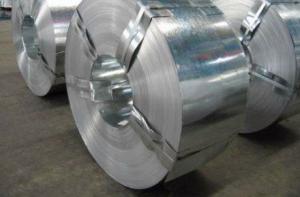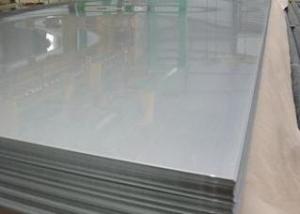430 SERIOUS COLD ROLLED STAINLESS STEEL SHEETS/COILS
- Loading Port:
- Guangzhou
- Payment Terms:
- TT OR LC
- Min Order Qty:
- 100 m.t.
- Supply Capability:
- 10000 m.t./month
OKorder Service Pledge
OKorder Financial Service
You Might Also Like
Quick Details
| Standard: | AISI,ASTM,DIN,GB,JIS | Grade: | 400 series | Thickness: | 0.25-2.0mm |
| Place of Origin: | Guangdong China (Mainland) | Brand Name: | CMAX | Model Number: | SUS430 |
| Type: | Steel Coil | Technique: | Cold Rolled | Surface Treatment: | 2B, BA, HL, NO.4 |
| Application: | Utensils, kitchenware, cutlery, pots & bowls, sinks, gas stove etc. | Width: | 800-1300mm | Length: | As requested |
| Market: | Asia, Mid East, South America etc. | Form available: | coil/ panel/ strip/ sheet | Sample: | Available |
| Packing: | PVC film with wooden pallet | Hardness: | From full hard to DDQ | Edge: | Mill edge/ Slitting edge |
| Feature: | Clean & corrosion resistance | Cr content: | 16%-18% | Steel type: | Ferrite stainless steel |
| Product name: | Cheap Cold Rolled Stainless Steel Coil 430 |
Packaging & Delivery
| Packaging Detail: | Standard export package, pvc film with wooden pallet. |
| Delivery Detail: | 15-30 days after receiving deposit |
Specifications
Cheap cold rolled stainless steel coil 430
Manufacturer
Origin: Baosteel, Tisco, Jisco
High technology & advanced equipment
Product Description
Cheap Cold Rolled Stainless Steel Coil 430 / ss430
| Item name | Cheap Cold Rolled Stainless Steel Coil 430 |
| Grade | 400 series |
| Type | Steel coil |
| Origin | CHINA |
| Standard | AISI,ASTM,DIN,GB,JIS |
| Thickness | 0.25mm-2.0mm |
| Width | 800-1300mm |
| Length | As requested |
| Surface treatment | BA, 2B, HL, No.4 |
| Edge | Mill edge/ slitting edge |
| Hardness | Full hardness to DDQ |
| Application | Utensils, kitchenware, cutlery, pots & bowls, sinks, food industry, construction decorations etc. |
| Package | Standard export package, PVC film with wooden pallet |
| Payment terms | T/T, 20% deposit in advance, balance against copy of B/L |
| Delivery time | 15-30 days after receiving the deposit |
- Q: Are 111 stainless steel strips suitable for heat sinks?
- No, 111 stainless steel strips are not suitable for heat sinks as they do not have the necessary thermal conductivity properties required for effective heat dissipation.
- Q: How do you prevent stainless steel strips from rusting?
- To prevent stainless steel strips from rusting, it is important to regularly clean them using mild soap and water, and dry them thoroughly afterwards. Additionally, applying a thin layer of oil or a specialized stainless steel cleaner can help create a protective barrier against moisture and prevent rust formation.
- Q: What is the difference between annealed and tempered stainless steel strips?
- Two distinct heat treatment processes, annealing and tempering, lead to diverse properties and characteristics in stainless steel strips. Annealing involves heating the stainless steel strip to a specific temperature and gradually cooling it, often in a controlled environment. This method alleviates internal stresses, enhances ductility, and improves machinability. Annealed stainless steel strips possess a lower hardness, making them pliable and easier to manipulate into different forms. They also exhibit enhanced resistance to corrosion and reduced susceptibility to cracking or fracturing under stress. Conversely, tempering consists of heating the stainless steel strip to a specific temperature and rapidly cooling it. This process is typically performed following quenching, a rapid cooling technique used to increase hardness. Tempering serves to diminish the brittleness of hardened steel and enhance its toughness and ductility. Tempered stainless steel strips boast higher hardness levels, greater resistance to wear and deformation, and are suitable for applications necessitating heightened strength and durability. In summary, annealed stainless steel strips are softer, more ductile, and demonstrate improved corrosion resistance, while tempered stainless steel strips are harder, more resistant to wear, and possess superior strength and toughness. The choice between annealed and tempered stainless steel strips depends on the specific application and desired material properties.
- Q: What is the fracture toughness of stainless steel strips?
- The fracture toughness of stainless steel strips varies depending on the specific grade and composition of the stainless steel. Stainless steel is known for its high strength and toughness, making it resistant to fractures. However, the fracture toughness value can be influenced by factors such as the heat treatment, processing conditions, and any alloying elements present in the stainless steel. To determine the fracture toughness of a specific stainless steel strip, it is necessary to perform laboratory tests such as the Charpy or Izod impact tests or the J-integral test. These tests involve subjecting the material to controlled loading conditions and measuring the energy absorbed by the material before it fractures. The fracture toughness of stainless steel strips is typically characterized by the KIc value, which represents the critical stress intensity factor required for crack propagation. This value indicates the resistance of the material to fracture under a specific loading condition. Higher KIc values indicate greater fracture toughness. In general, stainless steel strips exhibit good fracture toughness due to their high strength and ductility. However, it is important to consider the specific grade and processing conditions of the stainless steel strip in order to accurately determine its fracture toughness.
- Q: What is the price range for stainless steel strips?
- The cost of stainless steel strips can fluctuate due to different elements like thickness, width, and grade. Typically, prices for stainless steel strips can vary between $1 and $10 per square foot. Nevertheless, for top-notch or customized stainless steel strips, the cost may rise. To establish an accurate price range, it is crucial to take into account the precise requirements and specifications of the desired stainless steel strips. It is advisable to directly communicate with suppliers or manufacturers for more precise and up-to-date pricing information.
- Q: What are the different widths available for stainless steel strips?
- The different widths available for stainless steel strips vary depending on the manufacturer and the specific requirements. However, common widths for stainless steel strips range from 0.5 inches to 24 inches or even wider.
- Q: What is the corrosion resistance in different environments of stainless steel strips?
- Stainless steel strips are known for their excellent corrosion resistance in various environments. This resistance is primarily due to the presence of chromium in the steel, which forms a passive layer of chromium oxide on the surface. This oxide layer acts as a protective barrier, preventing the underlying metal from being exposed to corrosive elements. In general, stainless steel strips exhibit good corrosion resistance in both atmospheric and aqueous environments. In atmospheric conditions, stainless steel strips can withstand exposure to moisture, oxygen, and pollutants without experiencing significant corrosion. This makes them suitable for outdoor applications such as architectural and marine structures. When it comes to aqueous environments, stainless steel strips offer varying levels of corrosion resistance depending on the specific grade and composition. For instance, austenitic stainless steels, such as Type 304 and 316, are highly resistant to corrosion in most organic and inorganic acids, as well as alkaline solutions. They are commonly used in industries such as chemical processing, food and beverage, and pharmaceuticals. Ferritic stainless steels, on the other hand, have lower corrosion resistance compared to austenitic grades but perform well in mildly corrosive environments such as freshwater and atmospheric exposure. They are often utilized in automotive applications, household appliances, and decorative purposes. Duplex stainless steels combine the best properties of both austenitic and ferritic grades, offering high corrosion resistance in a wide range of environments. They are particularly resistant to stress corrosion cracking and pitting, making them suitable for offshore and marine applications. It is important to note that while stainless steel strips generally have excellent corrosion resistance, their performance can still be influenced by factors such as temperature, concentration of corrosive agents, and mechanical stress. Therefore, it is essential to select the appropriate stainless steel grade based on the specific environment and application to ensure optimal corrosion resistance.
- Q: What are the surface finishes available for 111 stainless steel strips?
- There are several surface finishes available for 111 stainless steel strips. Some common finishes include: 1. No. 1 Finish: This is a hot-rolled, annealed, and pickled finish that is characterized by a rough, dull appearance. It is commonly used for industrial applications where appearance is not a priority. 2. No. 2B Finish: This is a bright, cold-rolled finish that is commonly used for applications that require a smooth and reflective surface. It is often used in decorative and architectural applications. 3. No. 2D Finish: This is a dull, cold-rolled finish that is similar to the No. 2B finish but has a slightly rougher surface. It is often used for applications that require a smooth surface but do not require a high level of reflectivity. 4. No. 3 Finish: This is a semi-polished finish that is obtained by using abrasives with a finer grit compared to the No. 2D finish. It provides a smoother and more uniform surface, making it suitable for applications that require a visually appealing finish. 5. No. 4 Finish: This is a brushed finish that is achieved by using abrasive belts or brushes to create a consistent pattern of fine lines on the surface. It is commonly used for decorative purposes, such as in architectural and kitchen applications. 6. No. 8 Mirror Finish: This is a highly reflective finish that is achieved by polishing the surface to a mirror-like appearance. It is often used in applications that require a high level of reflectivity, such as in mirrors or decorative items. These are just a few of the surface finishes available for 111 stainless steel strips. The choice of finish depends on the specific requirements of the application, including aesthetics, corrosion resistance, and functionality.
- Q: Can stainless steel strips be used in kitchenware?
- Yes, stainless steel strips can be used in kitchenware. Stainless steel is a popular choice for kitchenware due to its durability, resistance to corrosion, and ease of cleaning. Stainless steel strips can be used to make various kitchen utensils, cookware, and appliances, making them a suitable material for kitchenware applications.
- Q: Are stainless steel strips suitable for brewery tanks?
- Indeed, brewery tanks find stainless steel strips to be incredibly suitable. Given its outstanding corrosion resistance, durability, and hygienic qualities, stainless steel remains a favored option for brewery equipment. By utilizing stainless steel strips, the tanks are safeguarded against rust, staining, and chemical reactions, rendering them exceptionally well-suited for beer storage and fermentation. Moreover, stainless steel's ease of cleaning is paramount in preserving the beer's quality and flavor. Consequently, incorporating stainless steel strips in brewery tanks emerges as a dependable and pragmatic decision for the brewing industry.
Send your message to us
430 SERIOUS COLD ROLLED STAINLESS STEEL SHEETS/COILS
- Loading Port:
- Guangzhou
- Payment Terms:
- TT OR LC
- Min Order Qty:
- 100 m.t.
- Supply Capability:
- 10000 m.t./month
OKorder Service Pledge
OKorder Financial Service
Similar products
Hot products
Hot Searches
Related keywords
